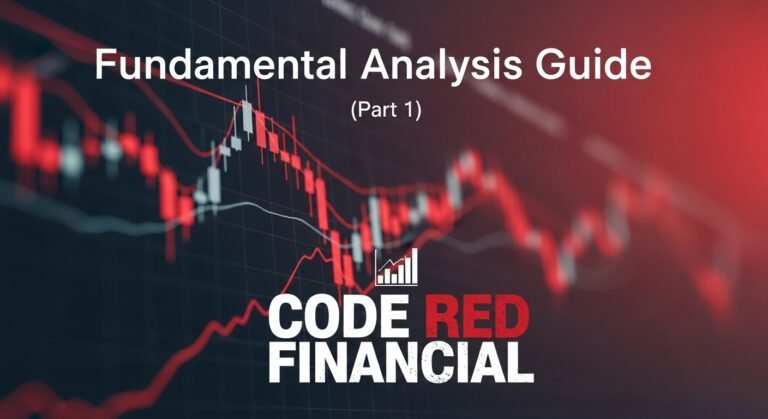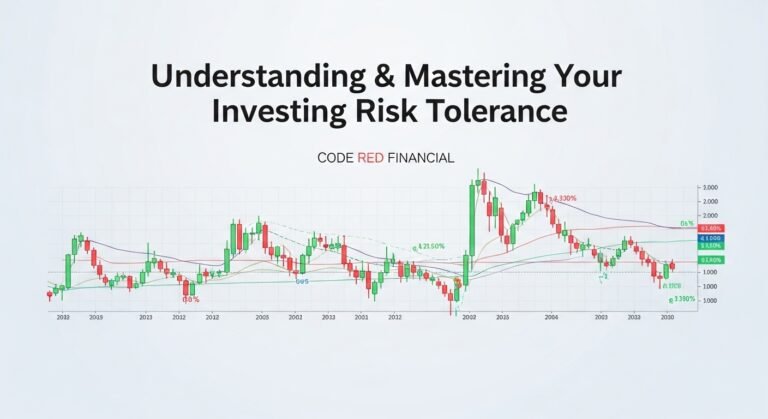
Over the past few weeks, I have been noticing more and more AI news content on various topics, including investments and finance, and thought, wow, how on earth can we successfully compete against the onslaught of content being produced, not just by individual content creators but against Fortune 500 companies with massive budgets.
Quite the dilemma, is it not? The rate at which AI-generated content is being created is simply astonishing, and this includes music and the myriad of often unbearable AI videos that are ubiquitous on YouTube and many other social media platforms. Obviously, this trend will only accelerate, including the illicit use of prominent members from government and finance, and society as a whole.
But where will it end? Just this past weekend, Berkshire Hathaway released a statement warning of illicit AI-generated videos of the Oracle of Omaha, Warren Buffett. These videos purportedly promote investment advice utilizing the voice and image of Buffett, saying things he had not said. Recently, Neil deGrasse Tyson, the famous astrophysicist, also released a similar warning against many of the “fake” videos of him promoting inaccurate information.
Clearly, this sort of AI-generated content is becoming an existential issue, but what are the true ramifications? However, before I am accused of being a Luddite, I must emphasize just how useful I have found Generative AI Large Language Models (LLM). It has been instrumental in assisting me in the build of several projects still under development—projects, quite frankly, I would not have been able to afford had it not been for the technological leap of Gen AI.
An omelet cannot be made with an unbroken egg, so as in anything we do, creative destruction is required. But this time feels awfully different, because there has never been anything quite like what we are witnessing—an advancement that has taken a sledgehammer, or dare I say, a wrecking ball, to so many industries all at once. My concern about the future of blogging is the least of our worries.
📉 The Staggering Financial Impact on Independent Bloggers
The core financial dilemma for independent content creators, particularly in the finance niche, is immediate and visceral. When my site, and others like it, started seeing significant web traffic declines (in some cases, up to 40% year-over-year for many niche publishers), the direct translation was a parallel drop in ad revenue. My internal financial data suggests an alarming dip in monthly ad income over the last year. This is not just a theoretical hit; it directly impacts the sustainability of my work, the dedicated due diligence I perform, and my ability to source reliable, timely financial articles for you, the reader.
The problem is two-fold and centers on the core concept of content monetization:
- Chatbot Siphoning: Large Language Models (LLMs) and integrated search engine chatbots (like Co-Pilot, Gemini AI, or ChatGPT) are designed to provide a direct answer. They “siphon off” information and synthesized data, eliminating the need for a user to click through to the original source—the blog. This means the blogger, who did the hard work of synthesis and presentation, loses the critical ad view, the referral traffic, and the vital digital footprint credit.
- The Scale of Inauthenticity: Corporate entities and less scrupulous creators can now flood the internet with generic, high-volume AI content at virtually zero cost. They can rank for general, high-volume keywords, effectively pushing human-authored, deeply researched content further down the search results. This directly translates to lost eyes and lost ad dollars for the independent expert.
So, the question then becomes, how do I or any of us competently compete against a technology that will only continue to improve from where it is currently? Well, we don’t, in the traditional sense.
The only option as of now is to leverage the technology to our advantage by embracing its strengths and, just like a boxer would do in the ring, exploiting its vulnerabilities. In other words, AI is great at many things, but the writing, for instance, is still pedantic in my opinion and thus, for now, will lack the flow and unique style of individual writers. But will that be sufficient to blunt the slowing web traffic to many blogs as a result of chatbots? That, frankly, I do not know. But if I were to bet, I would say no.
🛡️ Beyond Blogging: The Deepfake Financial Risk and Systematic Fraud
The financial threat extends far beyond a blogger’s ad income; it touches the very foundation of public trust and personal security. The warnings from figures like Warren Buffett and Neil deGrasse Tyson are not minor celebrity annoyances—they are klaxons warning of massive-scale financial fraud and systematic market manipulation.
Deepfake-Driven Financial Scams:
- Investment Fraud: Illicit videos or audio recordings, often created by deepfake technology, impersonate a trusted financial figure (a CEO, a fund manager, or a prominent investor). They promote a fraudulent scheme or a “hot stock tip” to deceive retail investors into wiring money or buying worthless assets. The realistic nature of the voice and image critically erodes the average person’s ability to discern a scam.
- Corporate Wire Fraud: There are documented cases of sophisticated deepfake scams where criminals use cloned voices to impersonate a company CFO or CEO in a conference call, instructing a finance employee to immediately wire millions of dollars to a foreign account. The visual and auditory authenticity of the “executive” is often enough to bypass established security protocols.
- Identity Theft & Account Opening: AI is already being used to create highly realistic fake ID documents and even deepfake videos to bypass ‘Know Your Customer’ (KYC) video verification processes at banks and financial institutions, opening the door for widespread identity-based financial crime and money laundering.
The “Liar’s Dividend” is a real, psychological threat: a climate of pervasive doubt where even genuine video or audio evidence can be dismissed by the public as “just a deepfake.” This erosion of confidence in verified information is a systemic risk to the financial markets themselves.

🏛️ The Imperative for AI Regulation and Accountability
To combat this tidal wave of financial deception and preserve the integrity of content creation, a significant and rapid regulatory shift is necessary. Relying on good faith is no longer an option; we need teeth in our laws.
The most critical step is the establishment of clear, federal legislation that grants and protects an individual’s property right in their own likeness and voice against unauthorized digital replication. The current patchwork of state-level ‘right of publicity’ laws is insufficient for the speed and scale of AI replication.
A Proposed Regulatory Framework: Holding Platforms Accountable
I suggest a regulation that strictly restricts the unauthorised use of the voice and image of others. This must include a substantial punitive fine to the large tech companies and platforms permitting such videos, and possible criminal charges or significant fines to the individuals creating them. Specifically, this regulation should mandate:
- Affirmative Consent for Digital Replicas: Any use of an individual’s likeness or voice that is digitally replicated, imitated, or synthesized by AI must be preceded by explicit, demonstrable, and digitally recorded consent from the individual.
- Platform Liability & Punitive Fines: Social media platforms, hosting companies, and generative AI tool providers must be held strictly accountable for knowingly hosting, promoting, or failing to remove unauthorized deepfake financial content within a mandated 24-hour window after formal reporting.
- Financial Penalty: The regulation should impose substantial, escalating fines on the platforms for each day the unauthorized content remains live, scaling based on the number of views and the potential for financial harm or market instability. This financial disincentive would force platforms to invest heavily in detection and removal systems.
- Creator Liability: The individual creators of malicious, financially-oriented deepfakes must face severe penalties, including fines equal to or exceeding the damage caused, and immediate criminal charges for fraud, especially when the content is designed to manipulate retail investors or commit corporate theft.
- Mandatory Disclosure/Watermarking: All AI-generated content (video, audio, and large-scale text) must include a visible or embedded, unremovable digital watermark or metadata disclosure to clearly indicate its synthetic origin. This will be the digital equivalent of a “Not Real” stamp.
This is not an attempt to stifle innovation, but to establish a crucial ethical and legal floor for digital governance. The scale of the financial risk—both to the individual consumer and to market stability—demands a rapid and forceful legislative response.
📈 The Blogger’s Strategic Edge: Leveraging E-E-A-T and Authenticity
It is clear that a strategic shift is required for this website to ensure that the passionate sourcing of articles and the pride in how we attempt to provide this information to our readers continue.
While we enjoy having AI edit some of our articles for grammar and clarity, I have been resisting and will continue to resist the urge to permit the articles to be fully AI-generated drivel. However, should that ever change for utility reasons, I will be certain to create a clearly marked area on the website to indicate that, perhaps for high-volume daily financial news updates in conjunction with the deep-dive weekly articles.
The future of independent blogging—and our competitive edge—lies in doubling down on what AI cannot replicate: Experience, Expertise, Authoritativeness, and Trustworthiness (E-E-A-T), a core concept in modern SEO that Google is prioritizing more than ever.
Here is our battle plan:
- Inject Deep, Personal Experience: SEO content that ranks is moving toward highly specialized, real-world experience. For a financial blog, this means sharing not just news, but personal case studies, unique analysis based on years of market watching, and an authentic, human take that is miles away from the generic LLM prose.
- Establish Authoritative Thought Leadership: We must leverage AI not to write the content, but to research and structure the content. Use it to find content gaps, analyze competitor outlines, and identify high-value, niche questions. The final output, however, must be infused with my unique insights, specialized knowledge, and voice.
- SEO Strategy Refined: Focus on long-tail, conversational keywords that AI chatbots may struggle to answer comprehensively, pushing users to click for a genuine, nuanced perspective. Optimize for rich snippets and clearly structured content (using H2s, H3s, and bulleted lists) to provide immediate value while encouraging deeper engagement and trust.
By refusing to become just another source of synthetic content and instead becoming an essential source of trusted, experienced financial commentary, we turn AI’s greatest weakness—its lack of human soul—into our most powerful, enduring strength.
Disclaimer: This article is for informational purposes only and does not constitute financial or investment advice. Consult with a qualified financial advisor or tax professional before making any decisions about your investments or retirement accounts.







